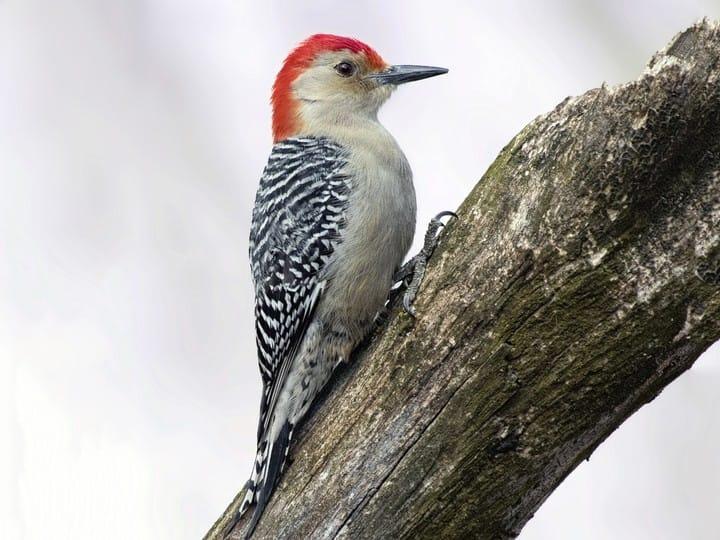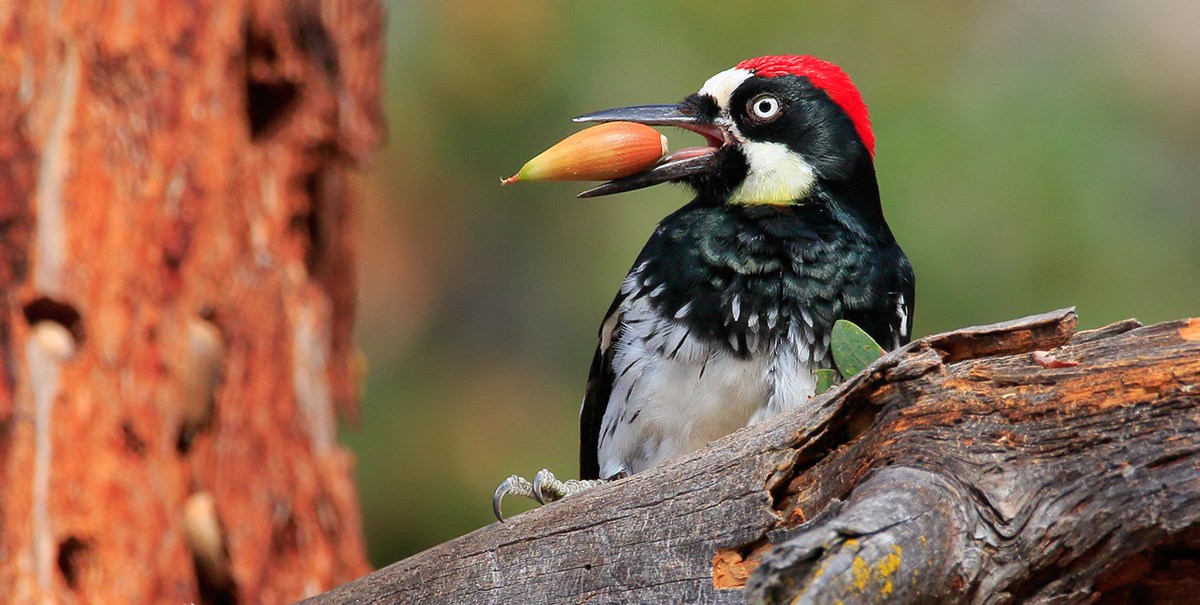Discovering Woodpeckers in Florida Habitats: Where to Identify These Birds
Discovering Woodpeckers in Florida Habitats: Where to Identify These Birds
Blog Article
Woodpeckers: A Comprehensive Guide to Recognizing These Special Birds
Woodpeckers, with their distinct actions and physical characteristics, have long astounded the inquisitiveness of ornithologists and nature lovers alike. From their balanced drumming echoing via the woods to their impressive adjustments for scaling tree trunks with simplicity, these birds present a remarkable research in bird biology. What really establishes woodpeckers apart is not just their striking look but additionally their important duty in maintaining the delicate balance of environments. As we check out the intricate anatomy, varied species, and eco-friendly relevance of woodpeckers, a deeper recognition for these unique birds and the secrets they hold unfolds.

Woodpeckers' Drumming Behavior
Woodpeckers display a rhythmic and exact drumming habits that offers different necessary features in their daily lives. This actions is largely related to communication, territory defense, and foraging. The unique drumming sound is produced by the rapid pecking of their beaks versus tough surface areas such as tree trunks, branches, and even metal objects.
Communication is a critical element of woodpecker actions, and drumming plays a considerable duty in this process. Woodpeckers make use of drumming to establish their existence, bring in mates, and preserve call with their partners and children. The regularity, strength, and period of drumming sequences convey certain messages to various other woodpeckers in the area.
Along with communication, woodpeckers make use of drumming behavior for territory protection. Woodpeckers in Florida. The loud and repetitive drumming functions as a warning to potential burglars, signaling that the location is already asserted. By developing their area via drumming, woodpeckers reduce the possibility of problems over beneficial sources such as food and nesting websites
Furthermore, woodpeckers likewise use drumming as a foraging method. The balanced pecking assists them situate pests hiding under the bark of trees by creating resonances that disrupt the prey's camouflage. This habits showcases the adaptability and ingenuity of woodpeckers in utilizing their drumming skills for several necessary purposes.
Distinct Adjustments for Tree Climbing
Having actually mastered the art of drumming to interact, defend area, and forage, woodpeckers have progressed special adjustments that promote their amazing climbing up abilities in their arboreal habitats. One vital adaptation is their customized feet. Woodpeckers have zygodactyl feet, with two toes directing onward and 2 toes pointing backwards. This plan supplies a solid grasp on the vertical surfaces of trees, allowing them to cling effortlessly while foraging for bugs or drumming. In addition, woodpeckers possess stiff tail feathers that function as a prop to sustain their bodies as they climb up. These tail plumes provide stability and balance, allowing woodpeckers to navigate up tree trunks with accuracy and dexterity.
In addition, woodpeckers have effective neck muscles and an unique skull structure that aid in their climbing up abilities. Their strong neck muscle mass enable them to quickly eat tree bark without experiencing whiplash, while their thick head and small mind serve as shock absorbers, safeguarding them from the impact of duplicated drumming. These adaptations jointly enable woodpeckers to navigate the vertical globe of trees with effectiveness and grace.
/https://tf-cmsv2-smithsonianmag-media.s3.amazonaws.com/filer_public/30/ac/30acf469-09cd-4fcc-a812-1aa30f477578/aprmay2024_l09_woodpeckers.jpg)
Duty of Woodpeckers in Communities
By foraging for pests under the bark of trees, woodpeckers help control bug populaces, stopping episodes that can damage the total wellness of the woodland. In addition, woodpeckers develop dental caries in trees that offer as important nesting sites for a range of other bird species, promoting biodiversity within the ecosystem.
Moreover, the drumming and vocalizations of woodpeckers play a vital duty in interaction and region facility. These noises not only serve to bring in friends however likewise help define borders in between different discover here woodpecker territories, reducing problems and advertising a harmonious coexistence within the woodland area. Generally, the existence of woodpeckers in forest ecosystems highlights their relevance as keystone types, influencing the characteristics and working of these habitats in multifaceted means.
Anatomy: Specialized Beaks and Feet
In the detailed web of woodland communities, the specialized beaks and feet of woodpeckers are crucial adaptations that allow them to fulfill their websites critical ecological duties. Woodpeckers possess special physiological features that are especially designed to help them in their foraging and nesting actions.
The most unique attribute of woodpeckers is their strong, chisel-shaped beaks. These beaks are completely adjusted for drilling into timber to uncover bugs, larvae, and sap concealed beneath the bark of trees. The strong muscle mass and tough structure of their beaks permit woodpeckers to eat a rate of as much as 20 times per second without causing damages to their heads.
Furthermore, woodpeckers have actually specialized feet that aid in their acrobatic climbing capabilities. Their feet have two toes pointing onward and 2 toes pointing backward, supplying a solid grasp on vertical surfaces (Woodpeckers in Florida). This distinct foot plan, in addition to tight tail feathers that act as a helpful prop, enables woodpeckers to hold on to tree trunks and branches easily while they browse for food or excavate nesting tooth cavities
Woodpecker Species Diversity
What variables add to the amazing variety of woodpecker species throughout various habitats and regions? Woodpeckers are a varied group of birds discovered throughout different ecosystems worldwide, with over 200 well-known species displaying adaptations to various atmospheres. One key aspect driving this More Info variety is the accessibility of appropriate habitats. Woodpeckers have evolved to live in a series of atmospheres, from forests and timberlands to grasslands and deserts, each presenting distinct challenges that have actually influenced the advancement of unique woodpecker types.
Another adding variable to woodpecker varieties variety is their specialized feeding behaviors. Different species have advanced to make use of various food sources, such as pests, tree sap, fruits, and nuts, leading to the advancement of certain adjustments in beak form, size, and strength. These adaptations allow woodpeckers to forage efficiently in their particular habitats, minimizing competitors amongst types and promoting specific niche differentiation. Furthermore, geographical seclusion and historic elements have played a function fit the circulation and diversity of woodpecker types, bring about the vast array of specialized adaptations seen in these remarkable birds.

Conclusion
In conclusion, woodpeckers are fascinating birds that show special drumming behavior, specialized adjustments for tree climbing, and play crucial functions in ecological communities. Their anatomy, consisting of specialized beaks and feet, enables them to thrive in their setting. With a diverse series of woodpecker varieties found worldwide, these birds are essential for keeping the health and wellness and equilibrium of woodlands and woodlands. Recognizing and appreciating the details of woodpeckers can supply valuable understandings into the environment.
Report this page